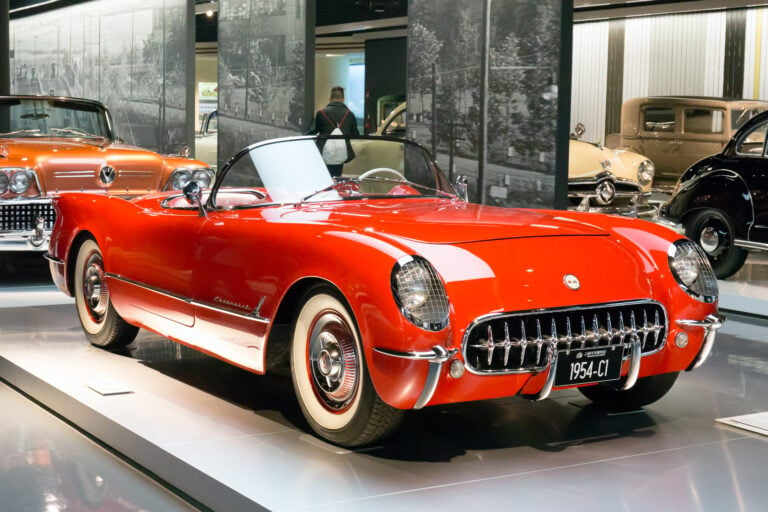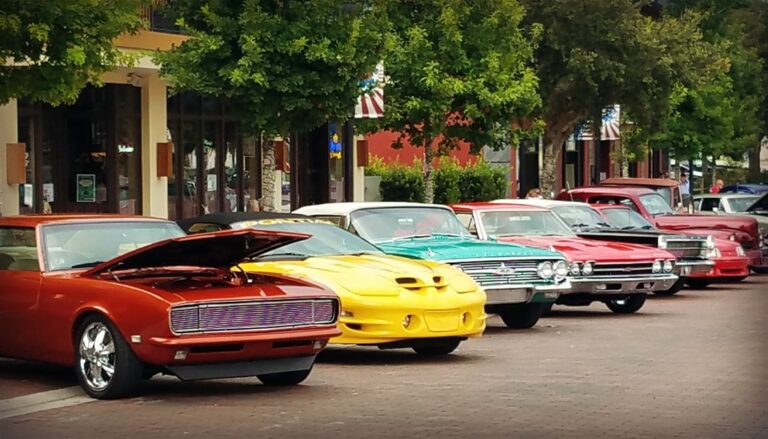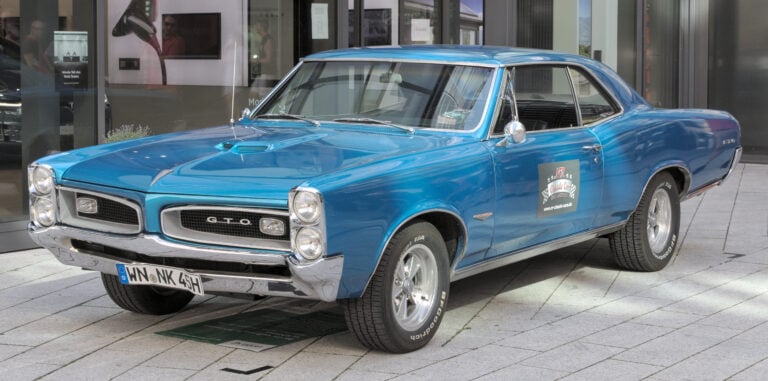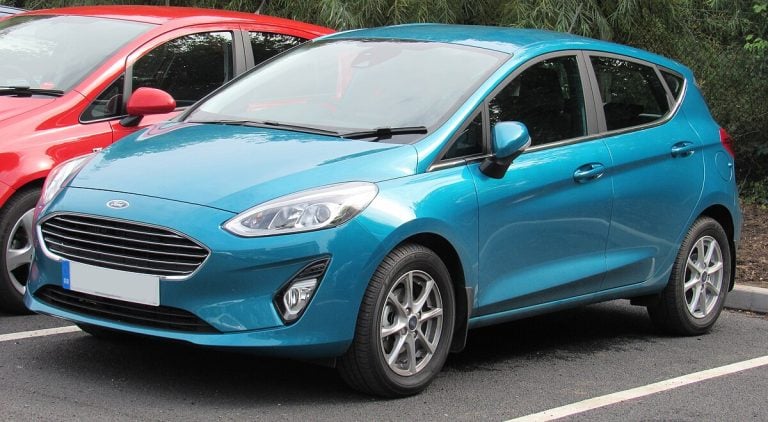The 30 Worst Ford Models Ever Built
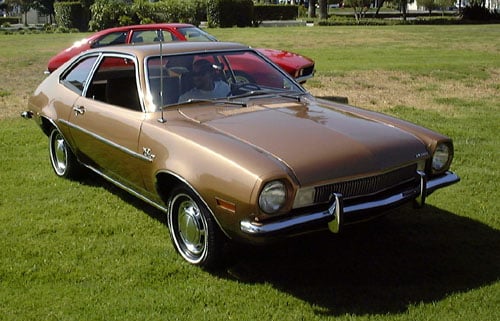
Ford has established itself as one of America’s most enduring automotive manufacturers, producing millions of vehicles across more than a century of operations. The company has delivered iconic models that shaped the automotive landscape, from the revolutionary Model T to the legendary Mustang and best-selling F-Series trucks.
However, not every Ford model has achieved success, and some have become cautionary tales in automotive history. Among the company’s extensive catalog, certain vehicles stand out for their design flaws, safety issues, poor market reception, or failure to meet consumer expectations.
These models span different decades and vehicle categories, from compact cars and sedans to SUVs and sports cars, revealing common patterns in automotive missteps and their lasting impact on both consumers and the manufacturer’s reputation.
Here are the 30 worst Ford models ever built:
1. Ford Pinto
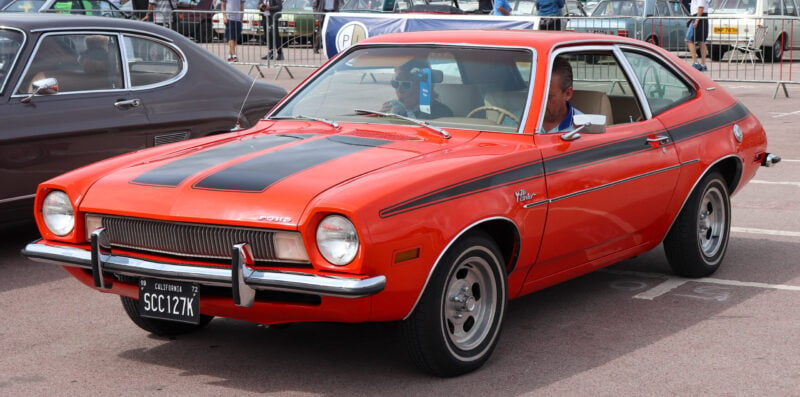
The Ford Pinto earned its reputation as one of America’s most dangerous vehicles during its production run from 1971 to 1980. Ford designed this subcompact car as an affordable entry-level option for budget-conscious consumers.
The Pinto’s major flaw centered on its fuel system design. The car was prone to catching fire in rear-end collisions due to its vulnerable fuel tank position.
Ford allegedly chose to forgo safety fixes to reduce costs. This decision transformed the Pinto into a symbol of corporate negligence in automotive history.
Despite selling over 3 million units across ten years, the Pinto’s safety controversies overshadowed its commercial success. The vehicle became synonymous with dangerous automotive design.
The Pinto’s legacy represents the worst period in Ford’s automotive history. Today, safety experts and consumers remember it as one of the most dangerous cars ever built.
2. Ford Edsel
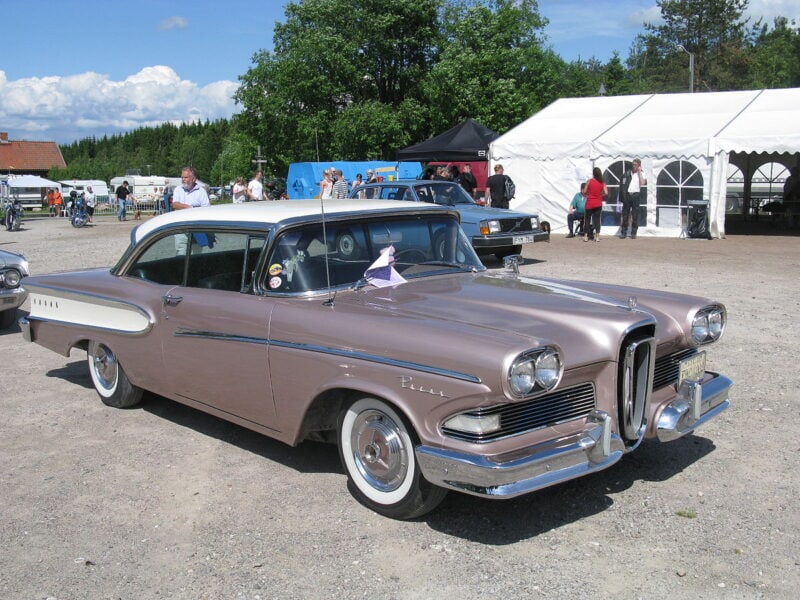
The Ford Edsel launched in 1958 as one of automotive history’s most spectacular commercial failures. Ford created the Edsel division to fill a gap between their existing brands but completely misjudged market demand.
The car suffered from poor market research and confusing pricing strategies. Ford initially projected sales of up to 400,000 units annually but fell drastically short of expectations.
In 1958, only 68,045 units sold despite an expensive marketing campaign. The following year proved even worse, with just 31,915 units sold due to design issues and poor economic conditions.
The Edsel featured problematic technology including unreliable servo motors and the troublesome “Teletouch” transmission system. These electronic components frequently failed and created nightmares for transmission shops.
Ford discontinued the Edsel after just three years, making it synonymous with business failure and poor product planning.
3. Ford GT90
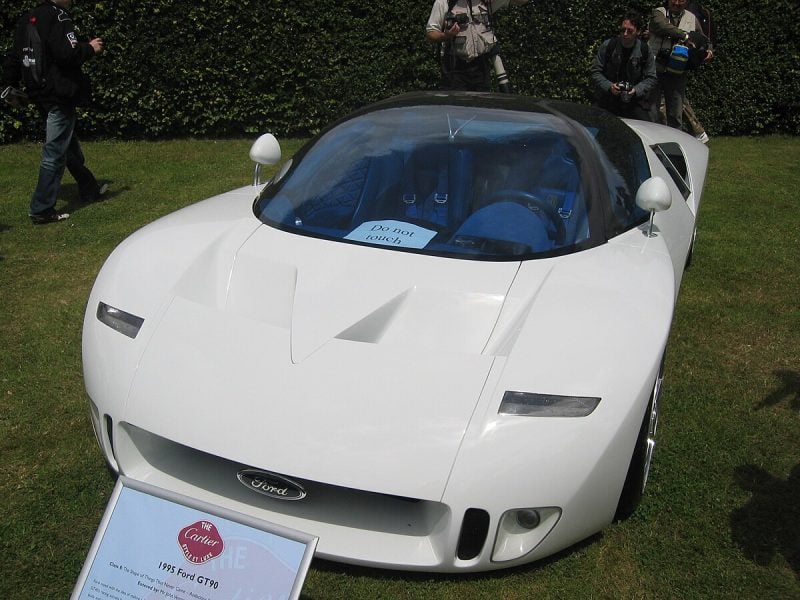
The Ford GT90 concept car debuted at the 1995 Detroit Auto Show as a potential production supercar. Ford initially designed it as a successor to the legendary GT40.
The GT90 featured a quad-turbocharged V12 engine producing 720 horsepower. Ford claimed it could reach speeds over 250 mph and complete the quarter mile in 10.9 seconds.
Despite the impressive specifications, Ford abandoned the project after building only one prototype. The company never provided clear reasons for canceling what could have been a McLaren F1 competitor.
The GT90’s failure to reach production represented a missed opportunity for Ford to establish dominance in the supercar market. The project consumed significant resources without delivering any return on investment.
Ford’s decision to shelve the GT90 left enthusiasts disappointed and questioning the company’s commitment to high-performance vehicles.
4. Ford Aspire
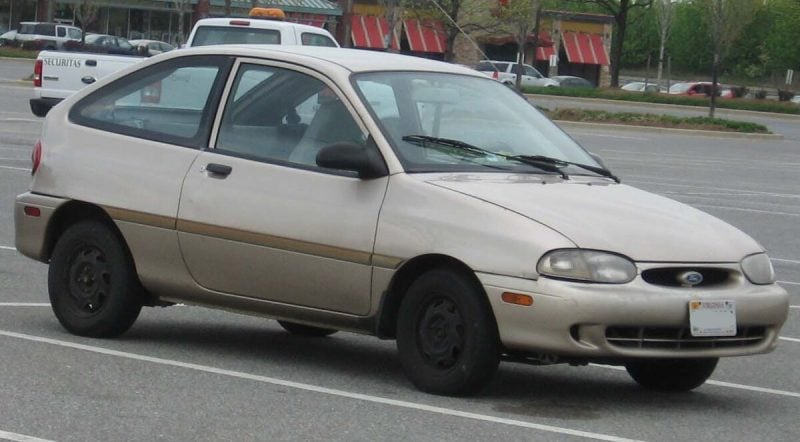
The Ford Aspire marked a low point in Ford’s budget car offerings between 1994 and 1997. This subcompact vehicle struggled to find its place in the competitive economy car market.
The Aspire’s most significant weakness was its underpowered engine. The small powerplant delivered insufficient horsepower for even basic driving needs, resulting in sluggish acceleration and poor highway performance.
Ford’s design team failed to create an appealing exterior for the Aspire. The car’s uninspiring styling made it forgettable among competitors in the subcompact segment.
Interior features were minimal, even by budget car standards of the 1990s. The Aspire lacked basic amenities that drivers expected, making it feel cheap and poorly equipped.
The vehicle’s poor performance, bland appearance, and sparse feature set prevented it from gaining traction with consumers. Ford discontinued the Aspire after just four model years.
5. Ford Taurus X
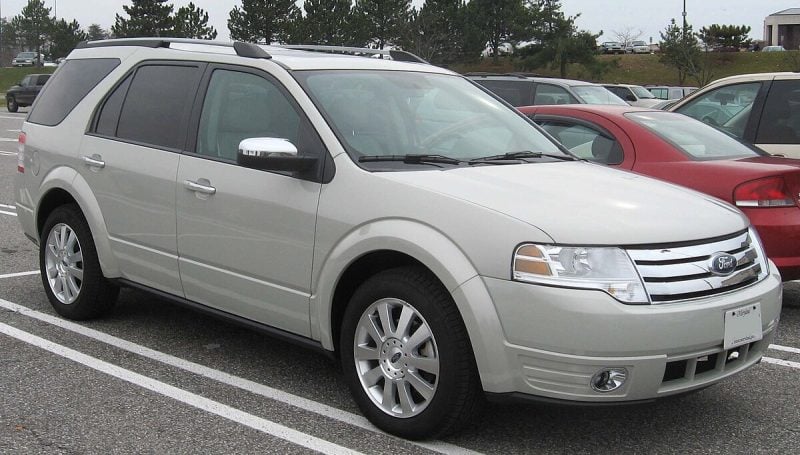
The Ford Taurus X represented a confusing rebadging effort that failed to solve underlying problems. Ford renamed the struggling Freestyle crossover to Taurus X for the 2008 model year.
The vehicle suffered from lackluster performance and uninspiring design. Its continuously variable transmission proved problematic and unresponsive for many drivers.
Market positioning created additional confusion. The Taurus X competed awkwardly between traditional SUVs and minivans without excelling in either category.
Sales figures reflected consumer rejection. Ford discontinued the Taurus X after just two model years due to poor market reception.
The crossover’s bland styling and mediocre fuel economy failed to attract buyers. Ford’s attempt to leverage the Taurus name couldn’t overcome the vehicle’s fundamental shortcomings.
6. Ford Five Hundred
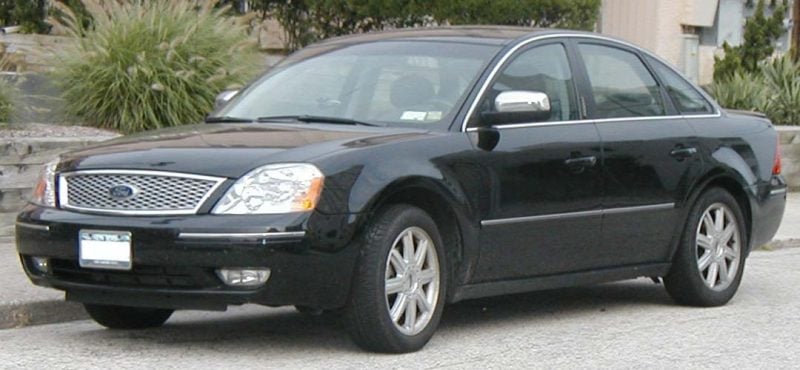
The Ford Five Hundred arrived in 2005 as Ford’s attempt to compete in the full-size sedan market. The vehicle was positioned as a replacement for the aging Taurus in certain markets.
The Five Hundred’s design pushed the boundaries of bland styling. Its unremarkable appearance made it one of the most forgettable vehicles Ford ever produced.
Performance issues plagued the model from launch. The standard V6 engine delivered underwhelming power for a vehicle of its size and weight class.
Interior space was one of the few positive aspects. The cabin offered generous room for passengers and cargo compared to many competitors.
The Five Hundred struggled to find buyers during its brief production run. Ford discontinued the model after just three years, replacing it with the revived Taurus nameplate in 2008.
7. Ford Tempo
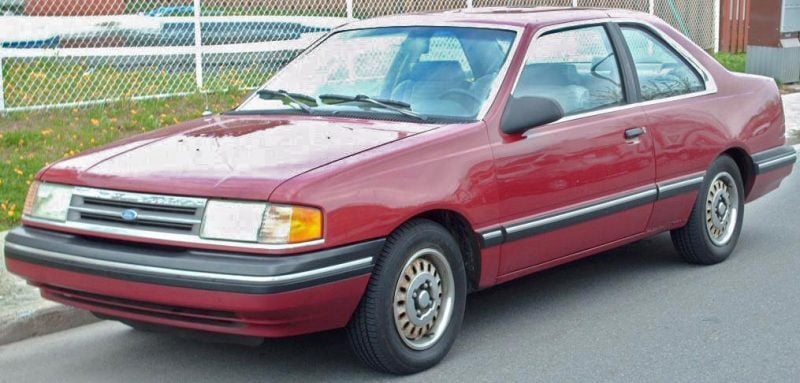
The Ford Tempo represented Ford’s attempt at aerodynamic design when it launched in 1984. The compact sedan remained in production through 1994, achieving modest sales success with over 100,000 units sold annually.
Despite its commercial performance, the Tempo suffered from numerous quality issues. Build quality problems plagued the model throughout its production run. The car’s reliability proved inconsistent compared to competitors in the compact segment.
Ford positioned the Tempo as an affordable family sedan. However, its uninspiring performance and lackluster driving dynamics failed to distinguish it in the crowded marketplace. The vehicle’s bland styling and cheap interior materials reinforced its budget-oriented image.
The Tempo’s mechanical components frequently required repairs. Transmission problems and engine issues became common complaints among owners. These reliability concerns damaged the model’s reputation and contributed to its eventual discontinuation in 1994.
8. Ford Mustang II
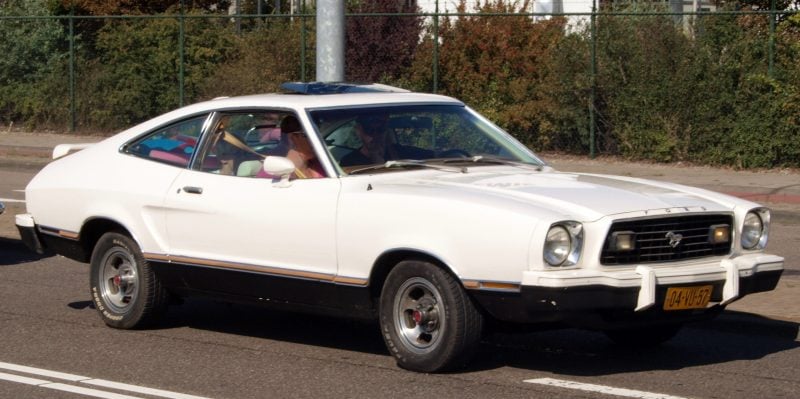
The Mustang II represents one of Ford’s most controversial decisions in automotive history. Built between 1974 and 1978, this second-generation model abandoned the performance heritage that made the original Mustang famous.
Ford downsized the Mustang II significantly, making it the smallest and slowest version ever produced. The base engine delivered a disappointing 100 horsepower, drastically reducing performance capabilities.
Even when Ford added a V8 option in 1975, the 302-cubic-inch engine produced only 129 horsepower due to emissions restrictions. The car’s fragile structure couldn’t handle the additional power properly.
The Mustang II’s design prioritized fuel economy over performance during the oil crisis era. However, this approach alienated traditional Mustang enthusiasts who expected muscle car performance.
Critics frequently describe the Mustang II as the weakest link in the Mustang’s otherwise continuous production line.
9. Ford Flex (first generation)
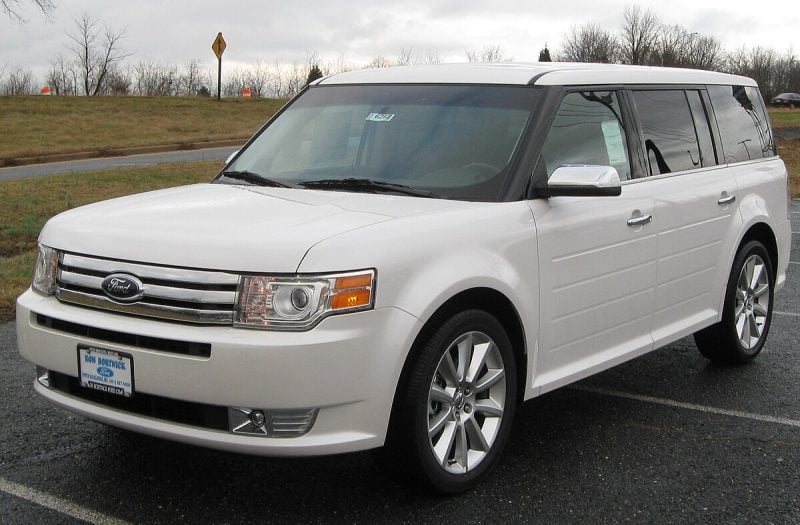
The first-generation Ford Flex suffered from numerous electrical problems that plagued owners from 2009 to 2010 and 2013 to 2015. These issues created reliability concerns for families who expected dependable transportation.
Common electrical faults included malfunctioning dashboard displays, power window failures, and problems with the vehicle’s entertainment system. Many owners reported intermittent issues that were difficult to diagnose and expensive to repair.
The Flex’s unconventional boxy design also limited its appeal compared to traditional SUVs and crossovers. Its polarizing appearance failed to attract mainstream buyers despite Ford’s marketing efforts.
Build quality inconsistencies further damaged the model’s reputation. Some vehicles experienced premature component failures that required costly repairs outside of warranty coverage.
While later generations addressed many of these problems, the first-generation Flex’s electrical gremlins and reliability issues earned it a spot among Ford’s more problematic models.
10. Ford Bronco II
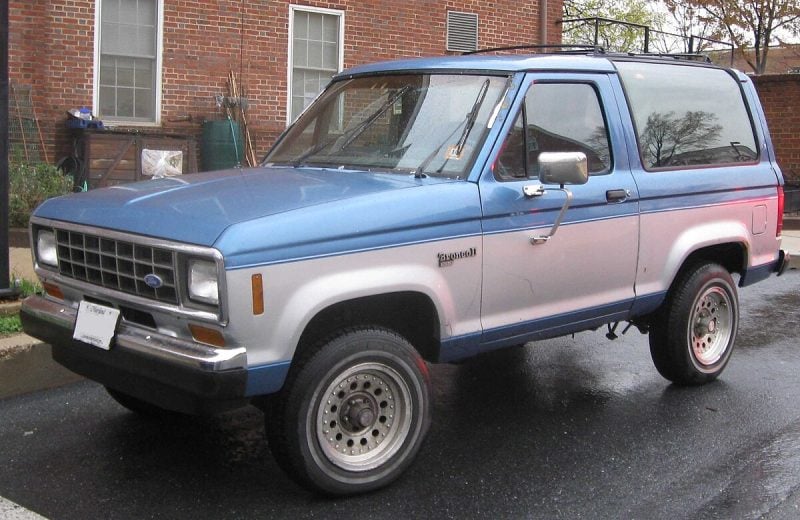
The Ford Bronco II earned its place among Ford’s worst vehicles through dangerous design flaws. Produced from 1984 to 1990, this compact SUV suffered from critical safety issues.
Ford built the Bronco II with a short wheelbase, narrow track, and high center of gravity. These design choices made the vehicle extremely unstable and prone to rollover accidents.
The SUV could tip over at speeds as low as 20 mph during normal driving maneuvers. This instability problem plagued the entire production run and resulted in numerous accidents.
Based on the Ranger pickup platform, the Bronco II delivered a harsh ride quality. The vehicle felt unrefined and uncomfortable compared to competitors.
Ford eventually replaced the problematic Bronco II with the four-door Explorer in 1991. The Explorer became significantly more successful and safer than its predecessor.
11. Ford Granada
The 1975 Ford Granada earned the distinction of being one of the worst vehicles to emerge from Detroit’s malaise era. The car represented Ford’s dramatic fall from grace following the 1973 oil crisis.
The Granada’s 250 cubic inch six-cylinder engine produced power levels comparable to a Ford Model A. This embarrassing power-to-displacement ratio made it particularly inefficient for its size.
Ford positioned the Granada as a luxury vehicle but delivered subpar performance across all metrics. The model epitomized everything wrong with American automotive manufacturing during the mid-1970s.
Critics have consistently ranked the Granada among Ford’s worst efforts. The vehicle’s poor engineering and lackluster execution made it a symbol of automotive decline during the malaise period.
The Granada’s legacy remains as a cautionary tale of how external pressures can lead to compromised vehicle development and manufacturing shortcuts.
12. Ford Probe
The Ford Probe represented Ford’s attempt to create a global sports coupe when it launched in 1989. The model was designed to replace the EXP in the United States and succeed the Capri in Europe.
Despite Ford’s branding, the Probe was essentially a Mazda in disguise. The mechanicals were entirely Mazda-sourced, with Ford only handling the styling duties. This unusual arrangement made it 60% Mazda and 40% Ford.
The Probe’s identity crisis made it too much of a Ford to be a Mazda and too much of a Mazda to be a Ford. This confused positioning hurt its market appeal despite decent handling and performance.
Ford sold the Probe across two generations until 1997. However, it struggled in the crowded compact sports coupe segment and never achieved the sales success Ford had hoped for.
13. Ford Maverick (1970s)
Ford launched the Maverick in 1970 as a budget-friendly compact car designed to compete with European imports. The company positioned it as an economical alternative for American consumers seeking affordable transportation.
The Maverick utilized a rear-wheel drive platform borrowed from the 1960 Falcon. It initially appeared as a two-door sedan, with a four-door variant added later in the production run.
Despite Ford’s marketing efforts, the Maverick failed to make a significant impact against foreign competitors. Import market share continued to grow during the Maverick’s peak sales years, undermining its intended purpose.
The vehicle suffered from poor build quality and lackluster performance. Many automotive critics and consumers regarded it as one of Ford’s disappointing offerings during the troubled 1970s era.
Production ended in 1977 after seven model years of underwhelming results in the marketplace.
14. Ford Escort (North America 1980s)
Ford introduced the North American Escort in 1980 as its smallest car offering. The company desperately needed a new small car for the American market following troubles with the Pinto.
The Escort was offered in North America between 1980 and 2003. During the 1980s, it represented Ford’s attempt to compete in the compact car segment.
The vehicle suffered from numerous quality issues that plagued early production models. Build quality was inconsistent, and reliability problems were common complaints among owners.
Performance was lackluster with underpowered engines that struggled to provide adequate acceleration. The driving experience felt uninspiring compared to competitors in the same class.
Interior materials were cheap and showed wear quickly. The overall design lacked the refinement that buyers expected from a modern compact car.
Despite being Ford’s entry-level offering, the 1980s Escort failed to establish a strong reputation in the competitive small car market.
15. Ford Contour
The Ford Contour debuted in 1994 as Ford’s attempt to compete in the midsize sedan market. The vehicle was based on Ford’s global CD4 platform and shared components with the Mercury Mystique.
Ford marketed the Contour as a European-inspired sedan with sporty handling characteristics. The car featured independent rear suspension and was available with both four-cylinder and V6 engine options.
Despite its engineering credentials, the Contour struggled with reliability issues throughout its production run. Owners frequently reported problems with the transmission, electrical systems, and engine components.
The vehicle’s interior space was cramped compared to competitors like the Honda Accord and Toyota Camry. Rear seat passengers found limited legroom and headroom particularly problematic.
Ford discontinued the Contour in 2000 after six years of disappointing sales. The model failed to achieve the market penetration Ford had hoped for in the competitive midsize segment.
16. Mercury Cougar (late 1970s)
The late 1970s Mercury Cougar represented a dramatic departure from its original pony car roots. Ford transformed the sporty coupe into a bloated personal luxury car that lost much of its appeal.
The redesigned Cougar grew significantly in size and weight. This made it sluggish and less responsive than earlier models that had competed directly with the Mustang.
Ford’s decision to reposition the Cougar as a luxury vehicle backfired. The car became a generic cruiser that lacked the performance credentials that made the original Cougar special.
Build quality suffered during this period. Many examples experienced reliability issues that tarnished the model’s reputation among buyers who expected better from Mercury.
The late 1970s Cougar failed to attract new customers while alienating existing fans. It became a symbol of Ford’s struggles to find direction during the malaise era.
17. Ford Crown Victoria (late 2000s)
The late 2000s Ford Crown Victoria developed significant reliability issues that tarnished its reputation. The 2008 model year faced recurring mechanical and electrical problems that frustrated owners.
Common complaints included timing chain tensioner failures. These issues caused engine noise and potential damage if not addressed promptly.
Electrical system malfunctions plagued these later models. Owners reported problems with various electrical components failing prematurely.
The Crown Victoria ranked 11th in reliability among Ford models. However, the late 2000s versions contributed disproportionately to the 184 total complaints filed over the vehicle’s production run.
Fuel storage tank leaks became another concern. These issues posed safety risks and required expensive repairs.
Steering problems also emerged in these final years. The combination of multiple system failures made the late 2000s Crown Victoria models particularly problematic compared to earlier, more reliable versions of this traditionally dependable police cruiser.
18. Ford Excursion
The Ford Excursion earned criticism for its excessive size and poor fuel economy during its 2000-2005 production run. The Sierra Club dubbed it the Ford “Valdez” due to environmental concerns.
Built on the Super Duty truck platform, the Excursion measured almost 19 feet long and weighed 7,000 pounds. It was longer, wider, and taller than the Chevrolet Suburban.
The early model years faced the most problems. The 2000-2002 models experienced serious mechanical issues that required expensive repairs.
Poor fuel economy became a major drawback as gas prices rose. The vehicle’s massive size made it difficult to park and maneuver in urban areas.
Despite strong towing capacity and interior space, the Excursion’s impractical dimensions and reliability issues contributed to its reputation as one of Ford’s worst models.
19. Ford Fiesta (early 2010s)
The Ford Fiesta’s early 2010s models rank among Ford’s most problematic vehicles. The 2011, 2012, 2013, 2014, and 2015 model years experienced widespread reliability issues.
Transmission problems plagued these models extensively. The PowerShift dual-clutch automatic transmission suffered from shuddering, hesitation, and premature failure.
Engine troubles also affected early 2010s Fiestas. Owners reported issues with the powertrain control module and catalytic converter failures.
Electrical malfunctions created additional headaches for drivers. These problems contributed to numerous NHTSA complaints and poor reliability ratings.
Consumer reviews consistently rated these model years poorly. The combination of transmission, engine, and electrical issues made the early 2010s Fiesta a vehicle to avoid.
Ford eventually addressed many of these problems in later model years, but the early 2010s Fiesta remains a cautionary tale of rushed engineering.
20. Ford Fusion (early 2000s)
The Ford Fusion debuted in 2006 as Ford’s entry into the competitive midsize sedan market. However, the early model years proved problematic for both the manufacturer and consumers.
The 2006 model year suffered from numerous mechanical issues that plagued early adopters. These problems included transmission failures, electrical system malfunctions, and premature brake wear.
The 2010 Ford Fusion became one of the most complained-about models in the vehicle’s history. Consumer reports highlighted frequent breakdowns and expensive repair costs that made ownership burdensome.
Early build quality issues extended through 2013 and 2014 model years. These vehicles experienced steering problems, engine troubles, and reliability concerns that damaged the Fusion’s initial reputation.
The combination of high repair costs and frequent mechanical failures made these early Fusion models a disappointing introduction to what would eventually become a more reliable sedan line.
21. Ford Crown Victoria Police Interceptor (early models)
The early Ford Crown Victoria Police Interceptor models from 1992 to the mid-1990s suffered from significant reliability issues. These first-generation P71 vehicles experienced frequent transmission problems and electrical failures.
The heavy-duty components were poorly calibrated in early production runs. Officers reported unexpected breakdowns during critical situations.
Ford’s initial attempt at police-specific modifications created more problems than solutions. The reinforced frame caused excessive weight distribution issues.
Early models had inadequate cooling systems for police duty cycles. Extended idling and high-speed pursuits led to overheating problems.
The electrical systems in these early interceptors frequently malfunctioned. Police departments experienced costly maintenance issues that affected operational readiness.
These teething problems gave the Crown Victoria Police Interceptor a rocky start before Ford addressed the design flaws in later model years.
22. Ford Fairmont
The Ford Fairmont emerged during the late 1970s energy crisis as Ford’s answer to consumer demands for smaller, more fuel-efficient family cars. The company positioned it as a practical alternative to larger vehicles.
However, the Fairmont failed to impress buyers with its uninspired design and lackluster performance. Critics consistently pointed to its plain, forgettable styling that lacked any distinctive character.
The vehicle suffered from significant quality control problems that plagued early production models. These issues damaged consumer confidence and contributed to poor long-term reliability ratings.
Driving dynamics proved equally disappointing, with reviewers noting the car’s uninspired handling and mediocre road performance. The Fairmont delivered adequate transportation but little excitement.
Despite Ford’s intentions, the Fairmont became one of the company’s more forgettable offerings, failing to establish a lasting presence in the competitive compact car market.
23. Ford Thunderbird (8th generation)
The eighth generation Ford Thunderbird marked a dramatic departure from its predecessors when it debuted in 1980. Ford substantially downsized the vehicle, transitioning it into the mid-size segment to commemorate the Thunderbird’s 25th anniversary.
This generation suffered from poor market reception and weak sales performance. Ford sold more 1979 Thunderbirds than the combined sales of all three model years from 1980 to 1982.
The downsized design failed to resonate with consumers who expected more from the Thunderbird nameplate. The vehicle’s smaller proportions diminished its presence and luxury appeal that buyers associated with the brand.
Production lasted only three model years, ending in 1982. The eighth generation’s commercial failure demonstrated that Ford’s downsizing strategy was poorly executed for this particular model.
24. Ford Freestar
The Ford Freestar replaced the Windstar in 2004 but failed to address the fundamental issues that plagued its predecessor. Ford marketed it as an improvement, yet the minivan brought few meaningful innovations to the competitive segment.
The Freestar suffered from a bland, uninspiring design that failed to capture consumer attention. Its styling lacked the modern appeal needed to compete with Honda’s Odyssey and Toyota’s Sienna.
Performance remained mediocre throughout its production run. The minivan offered adequate power but nothing exceptional for families seeking a reliable vehicle.
Reliability problems continued to haunt the model. The Freestar ranks 31st in reliability out of 44 Ford models, with owners filing 314 complaints over its four model years. Transmission issues dominated these complaints.
Sales figures reflected consumer indifference. The Freestar’s weak market performance led to a short production run, ending in 2007 after just four years.
25. Ford EcoSport (early models)
The Ford EcoSport’s early years marked a troubled start for Ford’s subcompact SUV. The 2018 and 2019 models suffered from significant performance issues that disappointed buyers.
These early EcoSport models delivered lackluster acceleration that made highway merging challenging. The weak engine performance struggled to provide adequate power for daily driving situations.
Ride quality proved uncomfortable for passengers. The suspension system failed to smooth out road imperfections effectively.
Fuel economy numbers fell short of expectations for a subcompact vehicle. Drivers found themselves visiting gas stations more frequently than anticipated.
Transmission problems plagued these early model years. Owners reported rough shifting and reliability concerns that required costly repairs.
The combination of poor performance, comfort issues, and mechanical problems made the 2018 and 2019 EcoSport models particularly problematic for Ford’s reputation in the competitive SUV market.
26. Ford F-150 Lightning (first generation)
The first-generation Ford F-150 Lightning debuted in 1993 as Ford’s attempt to create a high-performance street truck. This sport truck featured a 5.8-liter V8 engine producing 240 horsepower.
Ford positioned the Lightning as a performance-oriented vehicle rather than a practical work truck. The truck came with a lowered suspension and sport-tuned handling components.
The Lightning suffered from reliability issues that plagued many performance vehicles of the era. Engine problems and transmission failures were common complaints among owners.
Ford’s focus on performance came at the expense of practicality. The lowered suspension reduced ground clearance and towing capacity compared to standard F-150 models.
Production quality control issues affected early Lightning models. Many owners reported electrical problems and premature component failures that required expensive repairs.
The first-generation Lightning lasted until 1995 before Ford discontinued the model temporarily.
27. Ford Escape (first generation)
The first-generation Ford Escape launched in 2001 as Ford’s entry into the compact SUV market. Built jointly with Mazda, it represented Ford’s attempt to capitalize on the growing crossover trend.
The 2001 and 2002 models suffered from significant transmission problems. Owners reported slipping, delayed shifting, and premature transmission failure that required costly repairs.
Later first-generation models from 2004-2008 also earned poor reliability ratings. These years experienced higher repair frequencies and lower safety scores compared to other compact SUVs.
The early Escape models struggled with build quality issues that plagued many owners. Despite being a sales success, the first generation’s reliability problems made it one of Ford’s more problematic crossover attempts.
28. Ford Edge (First Generation)
The first-generation Ford Edge launched in 2007 with significant promise but quickly developed a reputation for reliability issues. Early model years struggled with numerous mechanical problems that plagued owners.
The 2007 debut year experienced typical first-year production challenges. Engine reliability problems emerged across multiple model years, creating costly repair bills for owners.
Transmission issues became a recurring complaint throughout the first generation. Many drivers reported premature failures and erratic shifting behavior that required expensive replacements.
The 2011-2013 model years represented the lowest point for first-generation reliability. These years accumulated the highest number of consumer complaints and warranty claims.
Ford’s initial attempt at the mid-size SUV market showed the company’s struggle to compete with established rivals. The Edge’s early years demonstrated how rushed development can compromise long-term reliability and customer satisfaction.
29. Ford Focus (early 2000s)
The early 2000s Ford Focus suffered from numerous quality control issues that plagued owners throughout its production run. Transmission problems were particularly common, with the dual-clutch automatic transmission experiencing frequent failures and jerky shifting.
Electrical systems proved unreliable in these models. Dashboard warning lights would illuminate without cause, and various electronic components failed prematurely.
The Focus also experienced significant engine problems during this period. The 2.0-liter engine developed issues with the timing belt and water pump, leading to costly repairs for owners.
Build quality remained inconsistent across production batches. Interior components broke easily, and exterior trim pieces would detach or fade quickly.
Despite its European engineering heritage, the early Focus models demonstrated poor durability compared to competitors. Many owners reported multiple warranty claims within the first few years of ownership.
The vehicle’s reputation for reliability never fully recovered from these early production problems.
30. Ford Mustang (early 1990s)
The early 1990s Ford Mustang represented a low point in the iconic pony car’s history. Ford relied on the aging Fox platform that had been in use since 1979, resulting in outdated design and engineering.
The 1990-1993 Mustang models suffered from uninspiring styling. The car looked dated compared to contemporary sports cars and lacked the aggressive stance that defined earlier generations.
Performance was equally disappointing. The base 2.3-liter four-cylinder engine produced only 105 horsepower, making acceleration sluggish. Even the 5.0-liter V8 option felt restrained by emissions regulations.
Build quality issues plagued these models. Interior materials felt cheap and flimsy, while rattles and squeaks became common complaints among owners.
The early 1990s Mustang failed to capture the excitement of its predecessors. Sales declined as buyers sought more modern alternatives, making this era one of the most forgettable in Mustang history.
Common Factors Behind Ford’s Worst Models
Ford’s most problematic vehicles share distinct patterns of failure that contributed to their poor reception. These failures typically stem from rushed engineering decisions, misguided design choices, and inadequate market research.
Engineering Flaws and Reliability Concerns
Poor engineering decisions have plagued many of Ford’s worst models throughout the company’s history. The Ford Pinto’s fuel tank placement created dangerous fire risks during rear-end collisions. This design flaw resulted from cost-cutting measures that prioritized affordability over safety.
Transmission problems have affected multiple Ford models across different decades. The PowerShift dual-clutch transmission in the Focus and Fiesta caused hesitation, jerking, and premature failure. These issues led to numerous recalls and class-action lawsuits.
Common reliability issues include:
- Faulty electrical systems
- Premature engine failures
- Cooling system defects
- Brake system malfunctions
The Ford Escort’s automatic transmission frequently failed within the first 100,000 miles. Many owners experienced costly repairs that exceeded the vehicle’s value. Quality control problems during manufacturing contributed to inconsistent build quality across production runs.
Design Decisions That Missed the Mark
Ford’s design missteps often reflected poor understanding of consumer preferences and market trends. The Ford Edsel featured an unusual vertical grille that consumers found unappealing. The car’s styling appeared dated even at launch in 1958.
Interior design choices have also contributed to model failures. The Ford Tempo featured cheap plastic components that cracked and faded quickly. Poor ergonomics made controls difficult to reach and operate safely while driving.
Size and proportion issues affected several models. The Ford Excursion’s massive dimensions made it impractical for everyday use. Parking challenges and poor fuel economy limited its appeal to mainstream consumers.
Design problems frequently involved:
- Outdated styling
- Poor material quality
- Impractical proportions
- Uncomfortable seating
The Ford Aspire’s bland appearance failed to attract buyers in a competitive small car market. Its uninspiring design language conveyed cheapness rather than value.
Market Response and Sales Performance
Sales figures clearly demonstrate when Ford models fail to connect with consumers. The Ford Edsel sold only 63,110 units in its first year despite massive marketing investments. Consumer rejection was swift and decisive.
Market timing has contributed to several Ford failures. The Ford Bronco II launched when consumers were shifting toward car-based SUVs. Its truck-based platform felt outdated compared to competitors’ more refined offerings.
Sales performance indicators include:
- Below-projected sales volumes
- Rapid depreciation rates
- Short production runs
- Dealer inventory buildup
The Ford Freestyle struggled to find its market position between SUVs and minivans. Consumers couldn’t understand its purpose, leading to poor sales performance. Ford discontinued the model after just four years of production.
Negative reviews from automotive journalists often amplified poor market reception. The Ford Contour received criticism for its cramped interior and high price point. These reviews influenced consumer purchasing decisions and dealer confidence.
Impact on Ford’s Reputation
Ford’s most problematic models created lasting damage to the company’s brand image and customer loyalty. The automaker learned critical lessons from these failures that shaped modern quality control and safety standards.
Brand Perception and Customer Trust
The Ford Pinto stands as the most damaging vehicle to Ford’s reputation in company history. At least 27 deaths were tied to preventable fuel tank combustion, creating a public relations disaster that lasted decades.
This safety crisis fundamentally changed how consumers viewed Ford’s commitment to customer safety. Legal battles and media coverage painted the company as prioritizing profits over human lives.
The Ford Bronco II further eroded trust through its rollover problems. The vehicle’s tendency to flip at speeds as low as 20 mph led to numerous lawsuits and government investigations.
Customer confidence plummeted during the 1970s and 1980s as reliability issues plagued multiple models. Ford’s market share declined as buyers turned to more dependable alternatives from Toyota and Honda.
The Edsel became synonymous with marketing failure, teaching business schools about misreading consumer preferences. This model damaged Ford’s reputation for understanding market demands.
Lessons Learned and Improvements Made
Ford implemented comprehensive safety protocols following the Pinto crisis. The company now conducts extensive crash testing and safety analysis before production begins.
Quality control measures were revolutionized after reliability problems damaged sales. Ford adopted statistical process control and continuous improvement methodologies throughout manufacturing.
The company established customer feedback systems to prevent future market miscalculations. Focus groups and consumer research became standard practice for new vehicle development.
Modern Ford vehicles consistently earn high safety ratings from NHTSA and IIHS. The company’s current reputation for safety represents a complete transformation from its troubled past.
Key improvements include:
- Enhanced crash testing protocols
- Stricter quality control standards
- Improved customer research methods
- Better supplier oversight systems

